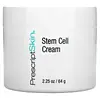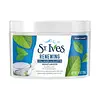What's inside
What's inside
 Key Ingredients
Key Ingredients

No key ingredients
 Benefits
Benefits

 Concerns
Concerns

 Ingredients Side-by-side
Ingredients Side-by-side

Water
Skin ConditioningCaprylic/Capric Triglyceride
MaskingC12-15 Alkyl Benzoate
AntimicrobialGlycerin
HumectantDimethicone
EmollientGlyceryl Stearate Se
EmulsifyingSorbitol
HumectantCetyl Alcohol
EmollientStearic Acid
CleansingCarthamus Tinctorius Seed Oil
MaskingCarbomer
Emulsion StabilisingPEG-100 Stearate
Glyceryl Stearate
EmollientSodium PCA
HumectantDisodium EDTA
Malus Domestica Fruit Cell Culture Extract
Skin ConditioningHumulus Lupulus Extract
AntimicrobialLavandula Angustifolia Flower/Leaf/Stem Extract
MaskingCalendula Officinalis Flower Extract
MaskingChamomilla Recutita Flower Extract
MaskingCitrus Limon Peel Extract
EmollientCucumis Sativus Seed Extract
Skin ConditioningCamellia Sinensis Leaf Extract
AntimicrobialPyrus Malus Fruit Extract
Skin ConditioningSpirulina Platensis Extract
Skin ProtectingXanthan Gum
EmulsifyingLecithin
EmollientSodium Hydroxide
BufferingPhenoxyethanol
PreservativeEthylhexylglycerin
Skin ConditioningCitral
PerfumingLimonene
PerfumingParfum
MaskingWater, Caprylic/Capric Triglyceride, C12-15 Alkyl Benzoate, Glycerin, Dimethicone, Glyceryl Stearate Se, Sorbitol, Cetyl Alcohol, Stearic Acid, Carthamus Tinctorius Seed Oil, Carbomer, PEG-100 Stearate, Glyceryl Stearate, Sodium PCA, Disodium EDTA, Malus Domestica Fruit Cell Culture Extract, Humulus Lupulus Extract, Lavandula Angustifolia Flower/Leaf/Stem Extract, Calendula Officinalis Flower Extract, Chamomilla Recutita Flower Extract, Citrus Limon Peel Extract, Cucumis Sativus Seed Extract, Camellia Sinensis Leaf Extract, Pyrus Malus Fruit Extract, Spirulina Platensis Extract, Xanthan Gum, Lecithin, Sodium Hydroxide, Phenoxyethanol, Ethylhexylglycerin, Citral, Limonene, Parfum
Water
Skin ConditioningParaffinum Liquidum
EmollientPropylene Glycol
HumectantPEG-100 Stearate
Glyceryl Stearate
EmollientStearic Acid
CleansingPhenoxyethanol
PreservativeCarthamus Tinctorius Seed Oil
MaskingTriethanolamine
BufferingCarbomer
Emulsion StabilisingDimethicone
EmollientCetyl Alcohol
EmollientDisodium EDTA
Parfum
MaskingEthylhexylglycerin
Skin ConditioningLinalool
PerfumingHexyl Cinnamal
PerfumingHydrolyzed Elastin
EmollientHydrolyzed Collagen
EmollientCoumarin
PerfumingGeraniol
PerfumingWater, Paraffinum Liquidum, Propylene Glycol, PEG-100 Stearate, Glyceryl Stearate, Stearic Acid, Phenoxyethanol, Carthamus Tinctorius Seed Oil, Triethanolamine, Carbomer, Dimethicone, Cetyl Alcohol, Disodium EDTA, Parfum, Ethylhexylglycerin, Linalool, Hexyl Cinnamal, Hydrolyzed Elastin, Hydrolyzed Collagen, Coumarin, Geraniol
 Reviews
Reviews

Ingredients Explained
These ingredients are found in both products.
Ingredients higher up in an ingredient list are typically present in a larger amount.
Carbomer is a polymer of acrylic acid. Its main role is to create a gel consistency.
A high amount of carbomer can cause pilling or balling up of products. Don't worry, most products contain 1% or less of carbomer.
Carthamus tinctorius seed oil comes from safflower, one of humanity's oldest crops.
Safflower seed oil contains a high percentage of linoleic acid and oleic acid. It also contains Vitamin E. These three components are effective moisturizers.
Vitamin E helps nourish your skin's lipid barrier. It is also a potent antioxidant. Antioxidants help fight free-radical molecules, or unstable molecules that may damage your skin cells.
Due to its high fatty acid content, this ingredient may not be malassezia folliculitis safe.
Thoughout history, safflower has been used for dying fabrics and in food as a saffron substitute.
Learn more about Carthamus Tinctorius Seed OilCetyl Alcohol is a fatty alcohol. Fatty Alcohols are most often used as an emollient or to thicken a product.
Its main roles are:
Though it has "alcohol" in the name, it is not related to denatured alcohol or ethyl alcohol.
The FDA allows products labeled "alcohol-free" to have fatty alcohols.
Learn more about Cetyl AlcoholDimethicone is a type of synthetic silicone created from natural materials such as quartz.
What it does:
Dimethicone comes in different viscosities:
Depending on the viscosity, dimethicone has different properties.
Ingredients lists don't always show which type is used, so we recommend reaching out to the brand if you have questions about the viscosity.
This ingredient is unlikely to cause irritation because it does not get absorbed into skin. However, people with silicone allergies should be careful about using this ingredient.
Note: Dimethicone may contribute to pilling. This is because it is not oil or water soluble, so pilling may occur when layered with products. When mixed with heavy oils in a formula, the outcome is also quite greasy.
Learn more about DimethiconeDisodium EDTA plays a role in making products more stable by aiding other preservatives.
It is a chelating agent, meaning it neutralizes metal ions that may be found in a product.
Disodium EDTA is a salt of edetic acid and is found to be safe in cosmetic ingredients.
Learn more about Disodium EDTAEthylhexylglycerin (we can't pronounce this either) is commonly used as a preservative and skin softener. It is derived from glyceryl.
You might see Ethylhexylglycerin often paired with other preservatives such as phenoxyethanol. Ethylhexylglycerin has been found to increase the effectiveness of these other preservatives.
Glyceryl Stearate is a mix of glycerin and stearic acid.
It is used to stabilize the mixing of water and oil ingredients. By preventing these ingredients from separating, it can help elongate shelf life. It can also help thicken the product's texture.
As an emollient, it helps soften skin and supports barrier-replenishing ingredients.
In cosmetics, Glyceryl Stearate is often made from vegetable oils or synthetically produced.
This ingredient may not be fungal-acne safe
Fun fact: The human body also creates Glyceryl Stearate naturally.
Learn more about Glyceryl StearateParfum is a catch-all term for an ingredient or more that is used to give a scent to products.
Also called "fragrance", this ingredient can be a blend of hundreds of chemicals or plant oils. This means every product with "fragrance" or "parfum" in the ingredients list is a different mixture.
For instance, Habanolide is a proprietary trade name for a specific aroma chemical. When used as a fragrance ingredient in cosmetics, most aroma chemicals fall under the broad labeling category of “FRAGRANCE” or “PARFUM” according to EU and US regulations.
The term 'parfum' or 'fragrance' is not regulated in many countries. In many cases, it is up to the brand to define this term.
For instance, many brands choose to label themselves as "fragrance-free" because they are not using synthetic fragrances. However, their products may still contain ingredients such as essential oils that are considered a fragrance by INCI standards.
One example is Calendula flower extract. Calendula is an essential oil that still imparts a scent or 'fragrance'.
Depending on the blend, the ingredients in the mixture can cause allergies and sensitivities on the skin. Some ingredients that are known EU allergens include linalool and citronellol.
Parfum can also be used to mask or cover an unpleasant scent.
The bottom line is: not all fragrances/parfum/ingredients are created equally. If you are worried about fragrances, we recommend taking a closer look at an ingredient. And of course, we always recommend speaking with a professional.
Learn more about ParfumPeg-100 Stearate is an emollient and emulsifier. As an emollient, it helps keep skin soft by trapping moisture in. On the other hand, emulsifiers help prevent oil and water from separating in a product.
PEGS are a hydrophilic polyether compound . There are 100 ethylene oxide monomers in Peg-100 Stearate. Peg-100 Stearate is polyethylene glycol ester of stearic acid.
Phenoxyethanol is a preservative that has germicide, antimicrobial, and aromatic properties. Studies show that phenoxyethanol can prevent microbial growth. By itself, it has a scent that is similar to that of a rose.
It's often used in formulations along with Caprylyl Glycol to preserve the shelf life of products.
Stearic Acid is a fatty acid. It is an emollient, emulsifier, and texture enhancer.
As an emollient, stearic acid helps soften skin. It aids the skin's protective barrier by preventing water loss. It also provides a gentle cleansing effect without stripping away natural oils.
Stearic acid may also be used to enhance the texture of products. It can add volume and stabilize ingredients such as water and oil. This can help water and oil ingredients from separating.
Sources of stearic acid include animal or vegetable fats/oils such as coconut or shea. It can be naturally found in butter, cocoa butter, shea butter, vegetable fats, and animal tallow.
This ingredient may not be Malassezia folliculitis, or fungal-acne safe.
Learn more about Stearic AcidWater. It's the most common cosmetic ingredient of all. You'll usually see it at the top of ingredient lists, meaning that it makes up the largest part of the product.
So why is it so popular? Water most often acts as a solvent - this means that it helps dissolve other ingredients into the formulation.
You'll also recognize water as that liquid we all need to stay alive. If you see this, drink a glass of water. Stay hydrated!
Learn more about Water